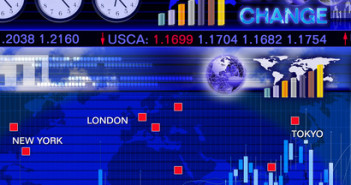The Week Ahead…
Although the macro-economic data points to be released throughout the upcoming week will likely be insufficient to greatly alter the global economic landscape, there are a number of key reports and central bank action for participants to decipher.
After Mark Carney’s comments from last week highlighted the divergence in monetary policy stances between the Bank of England and the European Central Bank, the UK will see CPI for the month of May drop early on Tuesday, followed up by the monetary policy minutes from the last BoE rate decision a few weeks ago.  The pace of consumer price increases within the UK economy has consolidated after peaking in June of last year, and has given Carney more leeway to keep rates low while the economy chews through some of the excess slack. Now with prices with forecast to stabilize around the 1.7% level on a y/o/y basis, a bottoming for the CPI index could have Carney beginning to think about the optimal time to begin the gradual normalization of rates. While Carney’s hawkish comments that a rate hike might unfold sooner than the market anticipates has sent the Pound within spitting distance of the 1.70 handle against the USD, a dissent showing up on the voting card of the MPC would spark further speculation the rate hike could come as soon as the end of 2014, keeping the Sterling rally alive and well. It’s no far stretch to think GBPUSD could be trading comfortably in the low 1.70s later this week should a strong CPI report and hawkish MPC minutes materialize, though another failure to overtake the 1.70 handle would be a negative technical development for long-GBP participants.
Another central bank that is getting close to tightening policy will also be in the spotlight this week, as the Federal Reserve holds their two-day policy meeting that will concludeon Wednesday. While growth has experienced a welcome pickup from the sharp contraction in Q1, the resulting rebound has been less than stellar, as consumer demand was shown to have moderated in the first few months of the second quarter. That being said, the labour market has remained resilient year-to-date, with the ancillary data like average workweek hours and earnings picking up, showing some of the notable slack in the labour market may be tightening. While the autopilot of a $10bn/month taper program is unlikely to be in jeopardy of seeing a change, the risk heading into the report is one of a hawkish nature, and that of further upside for the USD. Even with the Fed acknowledging the contraction in Q1 was greater than originally anticipated, the likely downward revision to the end of year unemployment forecast and potential for an upward revision to PCE forecasts may flow through to the FOMC’s dot plot of interest rate projections, and thus warn a tightening could be expected earlier than the mid-to-late 2015 market mindset. In addition, this will be the first meeting of the new Vice Chairman Stanley Fischer, the former Bank of Israel head, and could skew the spectrum of the board to one that is slightly hawkish than before his appointment.
While the early part of the week will be quiet from a domestic economic standpoint, CPI figures for the month of May to be released on Friday should liven things up for the Loonie. Expectations are for the temporary effects of higher energy prices to continue, with the headline print breaking above the 2.0% handle on a y/o/y basis, while the core print remains slightly more subdued at 1.5%.  We would caution the CAD bears that the larger, fat-tail risk for the CPI numbers on Friday is one that surprises to the upside, and has market participants questioning Poloz’s dovish stance on inflation; though, subdued retail sales, an uncertain labour market, and less than stellar external demand should keep inflation from getting out of hand, so the greater likelihood is to see prices remain close to the 2.0% level.
Further reading:
CPI figures
AUDUSD Could Rally To 0.9600 Before Turning Down
CPI figures



